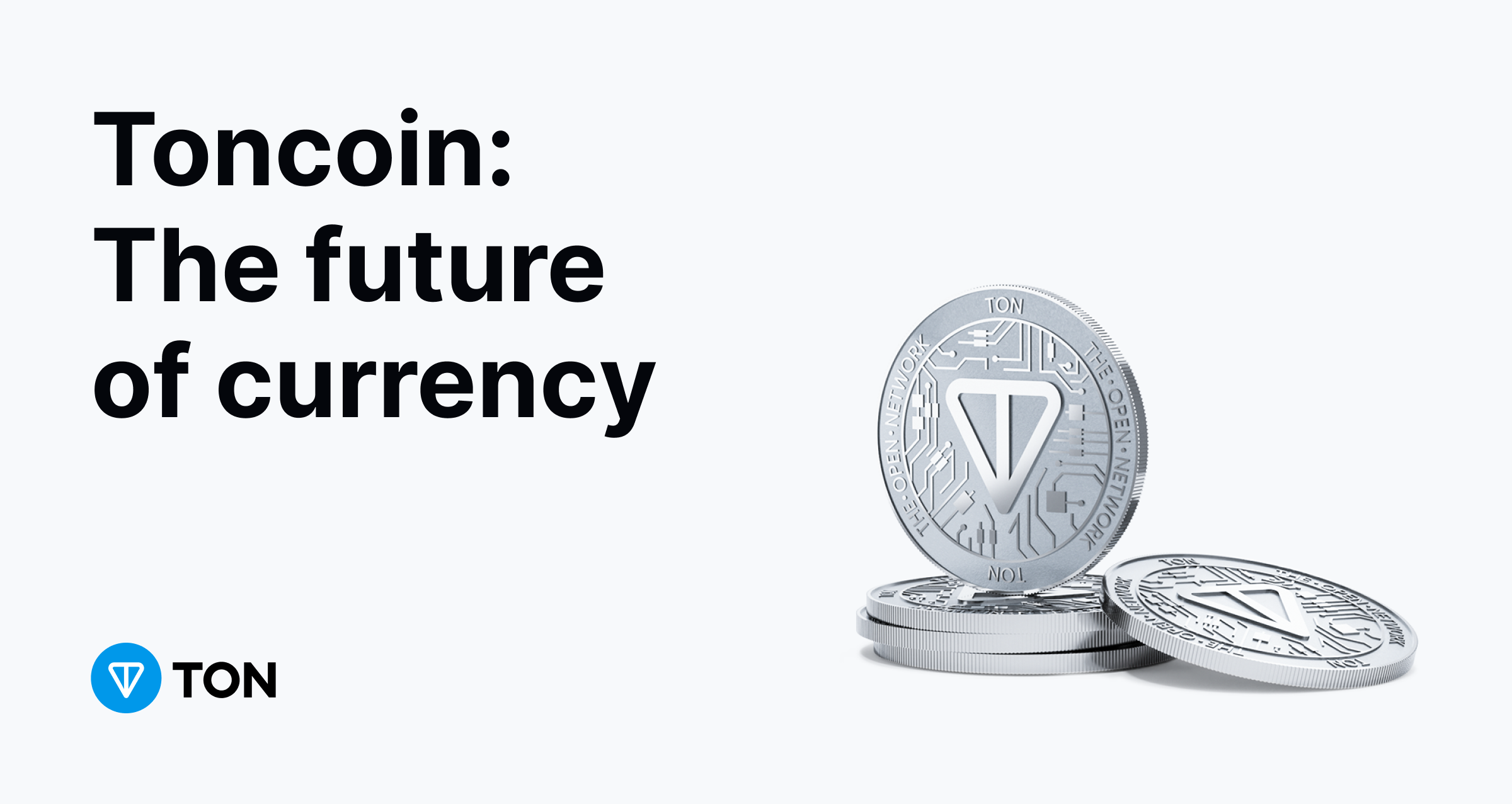Long time ago, in the age of face masks and horrible times of Covid, in 2020, the original Pavel Durov’s TON project had a run-in with the U.S. Securities and Exchange Commission (SEC) following the legal troubles. It set sail as a decentralized blockchain initiative, transitioning from a centralized one. And just like that, it gave birth to several dazzling offshoots: FreeTON, TON Foundation, TON Community, and Toncoin.
Among them, Toncoin, with its remarkable cryptocurrency price history, stands out as the most successful, with its token TON ranking 11th in terms of market capitalization. We’re about to explore Toncoin’s history, key features, unique qualities, and practical applications. Let’s learn, hodlers!
Read more: SEC’s Odd Request: Coinbase Rejects Delisting All But Bitcoin

The Origins of Toncoin
Let’s take a journey back in time: the year is 2020, and Pavel Durov has a wild idea to revolutionize crypto payment systems by integrating the world of messaging apps and cryptocurrency. Originally introduced as the “Telegram Open Network” or TON, the project was envisioned as a groundbreaking blockchain platform closely associated with the popular messaging app, Telegram. Thus, the Telegram Open Network (TON) was born. It was supposed to be the ultimate crypto payment system for Telegram’s 500 million users.
In May 2020, Pavel Durov announced the closure of the Telegram Open Network. He had a little disagreement with the U.S. Securities and Exchange Commission (SEC) and they banned Telegram cryptocurrency “Gram” distribution. TON was caught in the crossfire.
Following this, several independent teams continued to work on a TON blockchain based on the original project’s code. We’ve got Free TON, which later became Everscale, a Chinese project by TON Community (which is currently taking a snooze), and the newcomer on the block, NewTON.
NewTON launched a test network called NewTON Blockchain. In August 2021, the TON team transferred the ton.org domain and GitHub repository to the NewTON project, which was renamed The Open Network. It’s The Open Network that’s cooking up the Toncoin magic along with its native cryptocurrency, Toncoin (TON).
In December 2021, Pavel Durov openly supported Toncoin developers:

Toncoin Features Unveiled
Toncoin is all about practicality and efficiency. Its mission? To deliver a seamless experience for users. The TON development community has put in the effort to bring in advanced features that set this token apart from the cryptocurrency crowd.
- Proof-of-Stake Consensus Mechanism.
Proof-of-stake (PoS) consensus mechanisms are pretty common in blockchain networks, where validators play a crucial role in transactional efficiency. What makes this mechanism special? Validator rewards are allocated according to their stake size from transaction fees.
Also, TON can’t be mined anymore using the proof of work (PoW) consensus algorithm. The last Toncoin was mined in June 2022, and the total supply can only grow slightly each year. TON’s PoS consensus algorithm keeps the blockchain humming efficiently.
- TON Storage
Storing data on a blockchain isn’t groundbreaking, but Toncoin Storage takes it up a notch. It’s like Dropbox but with an added layer of security via private encryption, utilizing the owner’s wallet’s private key. This beefs up security for both online private and public storage.
- TON Proxy
Privacy is a top concern for blockchain users. TON Proxy lets users access the TON blockchain through decentralized VPNs and TOR-like networks. This means avoiding censorship and smooth access to dApps.
- Smart Contracts
TON, like many other blockchain ecosystems, relies on smart contracts to handle on-chain transactions with speed. These smart contracts have their own TVM (TON Virtual Machine), enabling complex smart contract deployments.
- TON DNS
TON DNS (TON domain name service) aims to make cryptocurrency wallets, accounts, smart contracts, and more user-friendly. It gives users easy-to-remember names, sparing them from dealing with strings of numbers and letters.
Think of TON DNS like a social media handle, incorporated into various domain names for effortless access. Users have the option to register their domain names and usernames on the blockchain. Plus, there are user-friendly apps supporting TON DNS, including cryptocurrency wallets.
In addition to this, the TON developers don’t rest on their laurels. In February, they dropped their roadmap for 2023, which includes:
- Launching a unified protocol for interactions between ecosystem applications and wallets.
- Enhancing blockchain security and stability.
- Supporting EVM signature verification.
- Improving TON wallet address formats, transforming them into decentralized encrypted messengers.
- Implementing a mechanism for burning a portion of fees.
- Enabling cross-chain transfers between TON and Polygon, as well as creating a bridge for Bitcoin, ETH, and BNB transfers.
- Separating nodes into collators and validators to boost blockchain performance.
Furthermore, the TON team has introduced the Ton.vote, a shiny new platform for conducting votes. Through this platform, Toncoin holders can participate in decision-making across all network projects.

Toncoin’s Blockchain: Breaking Records
Toncoin soars to new heights in the cryptocurrency landscape due to several unique qualities:
- Record-Breaking Speed. The TON network boasts incredible transaction processing speed, achieving 55,000 transactions per second in September 2021. The company claims the network can process millions of transactions per second (TPS).
- Eco-Friendly. Unlike some other blockchains, TON takes the green route. Its operations have a minimal environmental impact, making it an eco-friendly choice in the crypto world.
- Revolutionary Structure. The TON network operates on a multi-layered model with sharding at its core, facilitating quicker operations and efficient transaction validation.
- Comprehensive Services. The TON ecosystem offers a wide range of services. From a variety of wallet options to decentralized storage and VPN access, Toncoin has it all.
Ton Token’s Use Cases
Now let’s explore the many roles that TON coin plays within the TON ecosystem:
- Processing Fees for Transactions and Smart Contracts
TON is used to pay for transaction fees within the TON network. Want to send funds or execute a smart contract? You’ll need a TON token in your wallet to make it happen.
- Payments for Services
TON serves as a means of payment for various services offered by applications built on the TON platform. From buying goods to settling bills, TON coin is your go-to digital wallet.
- Contribution to Network Security via Staking
TON plays a vital role in staking payments, ensuring the protection and security of the blockchain. Through staking in cryptocurrency, it acts as a security deposit for network validators. These validators lock up TON tokens to ensure they’re committed to guarding the blockchain’s integrity. This system, PoS, makes validators act honestly and helps secure the blockchain.
- Cross-Chain Transaction Fees
TON it’s the bridge that connects different blockchain networks within the TON ecosystem Users can use it to move assets and conduct transactions seamlessly between different blockchain networks connected to TON.
- Integral to On-Chain Governance
As The Open Network is a decentralized autonomous organization (DAO), TON is a key player in the TON ecosystem’s decision-making process. It allows token holders to participate in governance in blockchain and vote on network upgrades and changes.
- Payment for Blockchain-Based Domain Names (DNS)
TON can be used to register and manage blockchain-based domain names within the TON ecosystem. This greatly simplifies access to decentralized services.
- Validators’ Stakes
Validators, who help secure the TON blockchain, are required to stake TON as collateral. This ensures their unwavering commitment to the network’s integrity and security.
- Payment for Decentralized Data Storage.
TON token can be used as a decentralized data payment for TON Storage services. Users can securely store data and pay for storage using TON.
Choosing the Perfect Wallet for TON Tokens
Storing TON tokens offers users a range of choices:
Custodial wallets – known for their simplicity, are ideal for users seeking straightforward solutions.
Non-custodial wallets – provide greater control over the assets.
Telegram users, you’re in luck! The Telegram platform offers some nifty options. The @wallet and @cryptobot serve as practical tools for transactions, management, and Toncoin purchase.
There is a great variety of TON wallets. They’re buzzing with activity, processing thousands of transactions every day, and helping users to manage their digital assets.
Final Word
It is worth noticing that TON, with a positive cryptocurrency price prediction, has come a long way since its inception as the Telegram Open Network. It now plays a pivotal role within the TON ecosystem. Keep an eye on Toncoin; it’s a cryptocurrency with a promising journey ahead.
Read more:
- Mason Discards AI vocals, Binance.US CEO Bids Adieu, Ethereum Gets a New Superhero and Bitcoin, Altcoins Took a Dive
- Altcoins: Exploring the World of Alternative Cryptocurrencies
- What the Heck is Worldcoin? OpenAI Crypto Project Explained
Disclaimer: All materials on this site are for informational purposes only. None of the material should be interpreted as investment advice. Please note that despite the nature of much of the material created and hosted on this website HODL FM is not a financial reference resource and the opinions of authors and other contributors are their own and should not be taken as financial advice. If you require advice of this sort, HODL FM strongly recommends contacting a qualified industry professional.





